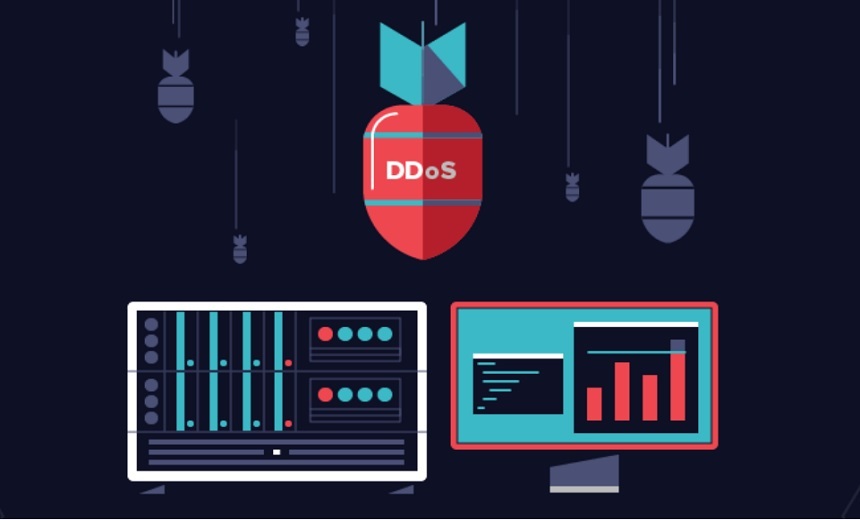What is a DDoS Attack?
This cyberattack overloads a network or website with traffic, effectively bringing it to a standstill. Many businesses turn to specialized DDoS migration service solutions to combat such threats, which help filter and manage malicious traffic while keeping services operational. By overwhelming a network with a deluge of requests, these attacks make legitimate access either incredibly slow or utterly impossible, disrupting the service provider and its end users.
DDoS attacks have evolved in frequency and sophistication over the years, posing an escalating challenge for businesses of all sizes. Traditional security measures like simple firewalls can no longer fend off these complex threats. Attackers frequently employ diverse methods, including volumetric attacks that flood the bandwidth, protocol attacks targeting server resources, and application-layer attacks aimed at specific web applications. It underlines the need for more sophisticated, multi-layered defenses to ensure essential services remain uninterrupted.
The Impact of DDoS Attacks on Businesses
The ramifications of a DDoS attack can be substantial. Businesses experience various adverse consequences, such as financial losses, damage to reputation, and operational disruptions. According to recent reports, some attacks can cost companies millions of dollars in damages, severely impacting their bottom line and customer trust. Financial institutions, e-commerce platforms, and healthcare providers are at high risk, as disruptions in these industries can result in significant immediate and long-term impacts.
For e-commerce platforms, even a few minutes of downtime can result in significant lost revenue. Service disruptions also lead to frustrated customers, potential long-term brand damage, and reduced customer loyalty. It highlights the crucial need for having robust countermeasures in place. The broader the scope of services a business offers online, the more critical it becomes to prepare effectively against these cyber threats. Additionally, regulatory fines and legal costs associated with data breaches stemming from DDoS attacks can further exacerbate financial strain.
Common Strategies for Mitigating DDoS Attacks
Businesses can implement several strategies to mitigate the effects of DDoS attacks. Understanding and employing these strategies can significantly affect a company’s ability to maintain operations during an attack.
- Traffic Filtering: This involves allowing only legitimate traffic to reach your network while filtering out suspicious or malicious data packets. It requires advanced algorithms and real-time monitoring to be effective. It involves multiple layers of filtration to ensure no malicious traffic slips through the cracks. Traffic filtering is vital because it prevents the server from being flooded with non-essential requests, thereby preserving bandwidth for legitimate users.
- Rate Limiting: By restricting the number of requests a server will accept over a short period, businesses can prevent their networks from being overwhelmed. This strategy helps in managing resource allocation more effectively. Limiting the traffic rate can prevent a server from buckling under the weight of sudden, massive traffic surges. Additionally, rate limiting can be configured to prioritize traffic from trusted sources, ensuring key clients and services remain unaffected.
- Load Balancing: Spreading incoming traffic among multiple servers guarantees that no individual server will be overwhelmed by the attack. It keeps the overall system more resilient and capable of managing large traffic volumes without crashing. Load balancing can also add redundancy, making the system more fault-tolerant and reliable under heavy load conditions. Many organizations deploy hardware-based and cloud-based load-balancing solutions to manage traffic and enhance uptime efficiently.
The Importance of Proactive Measures
Proactive security is critical to protecting against DDoS attacks. Regularly updating defensive measures and participating in threat-sharing communities can provide early warnings and effective responses. A recent study highlighted engaging with industry bodies and experts as crucial. Among the many benefits of being proactive, one of the most significant is identifying potential vulnerabilities before they can be exploited. Employee training on recognizing signs of cyber threats is also invaluable in creating an informed and vigilant workforce. Ensuring that all staff are aware of the tactics used in social engineering attacks, for example, can significantly diminish the likelihood of a breach. Regular cybersecurity training sessions and awareness programs can help employees stay up-to-date with the latest threat tactics and prevention strategies.
Real-Life Examples of Successful Mitigation
Many sectors have successfully implemented strategies to thwart DDoS attacks. For example, the finance industry frequently employs multi-layered defenses to minimize the risk of these attacks. They maintain robust operational integrity even during peak attack periods by combining traffic filtering, rate limiting, and load balancing. Financial firms often see themselves as prime targets due to the lucrative nature of their data, and hence, they invest heavily in strengthening their defense mechanisms. The tech industry invests heavily in DDoS mitigation solutions, using automated defenses and expert oversight to maintain uptime and service availability. These proactive measures help to safeguard customer data and sustain reliable user experiences, even in the face of relentless attacks. By adopting a layered security approach, tech companies can more effectively identify and neutralize threats before they can disrupt services. Successful mitigation often involves cooperation with ISPs and other external partners to ensure a comprehensive defense strategy.
Final Thoughts
DDoS attacks represent a persistent threat to businesses worldwide. Nevertheless, companies can significantly decrease their susceptibility by comprehending the mechanisms of these attacks and implementing efficient mitigation strategies. Proactive planning and real-time defenses go a long way in safeguarding against the disruptions caused by DDoS attacks. Investing in the right technology and continually educating staff about cybersecurity best practices can be critical components of an effective defense plan.
Keep an eye for more latest news & updates on Mystories List!
